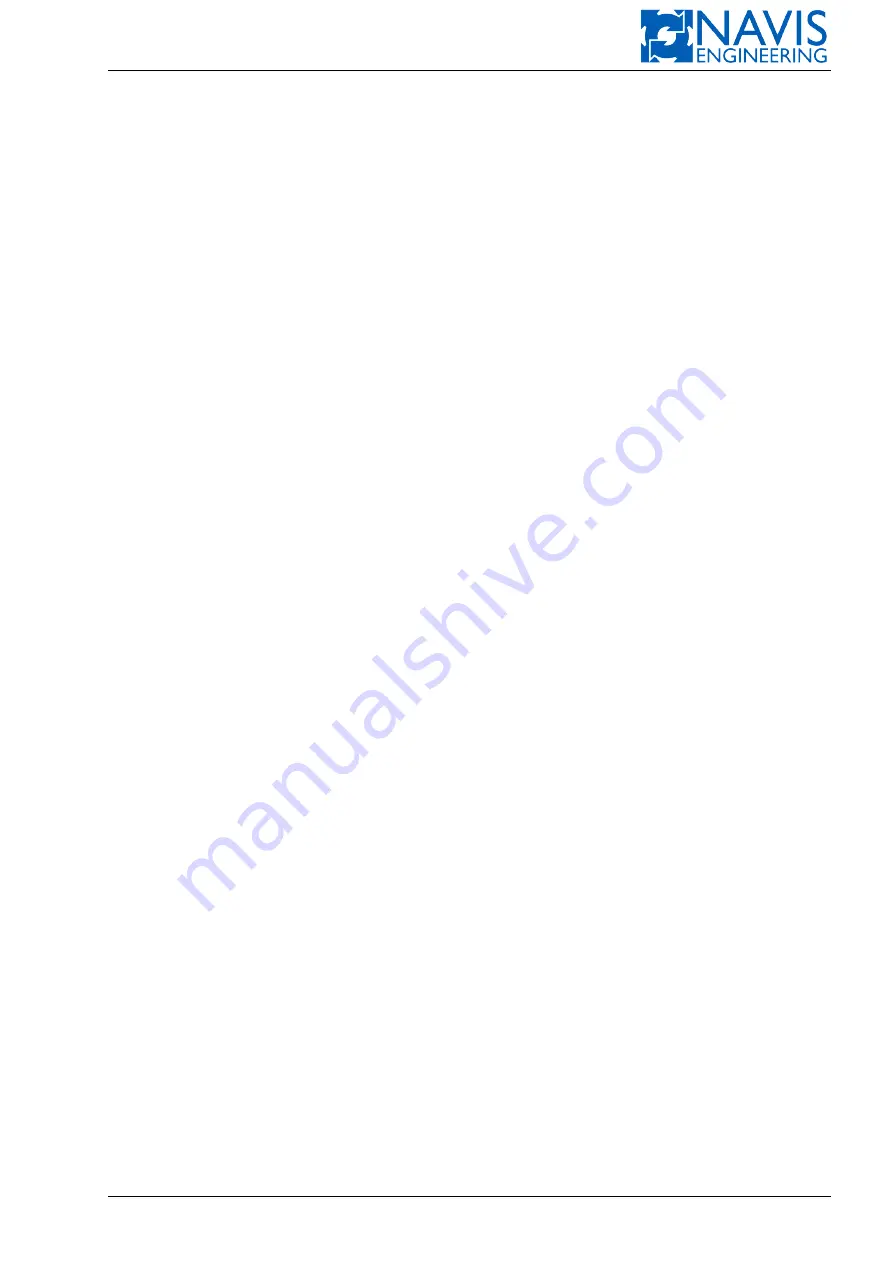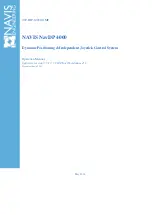
System Principles and Functionality
1.3
Basics of System Operation
An operator sets control mode and inputs data via Control Panel and LCD touchscreen.
With entered data Control Computer calculates position and heading setpoints, route parameters, force and turning
moment values demanding to provide the specified moving etc. Also, Control Computer receives feedback signals from
actuators and data from sensors and reference systems.
Signals from sensors and reference systems are processed with the purpose of fault detection, and then are used to
calculate scope of vessel coordinates and speed.
After being provided by different sensors, the estimates are weighted to obtain the best.
The estimated and preset data are compared in the Optimal Controller, which calculates the force demand in the surge
and sway axes, as well as the turning moment demand. These demands are transformed into actual control commands for
actuators, with the actual power and individual thruster rpm/angle/etc limits taken into account.
The commands for thrusters, represented in terms of rpm and rudder angles, are transformed into current and/or
voltage signals via special calibration tables, obtained earlier on the stage of calibration.
The demanded values of current and/or voltage control signals are transferred to PLC, and then PLC produces the
required current and voltage on its outputs. The actuators receive the signals from PLC and yield desired rpm and angles.
All the information about the control system operation and the vessel position and moving, including raw sensor data
and smoothed estimates, desired and actual thruster rpm/angles, position and heading offsets, enabled thruster configura-
tion, etc is displayed.
In case of a system fault or a situation which may affect the system performance, an alarm message is produced and
appears on the screen, and can also be printed in real time, if the Alarm Printer is connected.
Doc. 000.JDP-10000-OME, rev.3.3.13/“2102.$–17A-Advanced”
14
















































